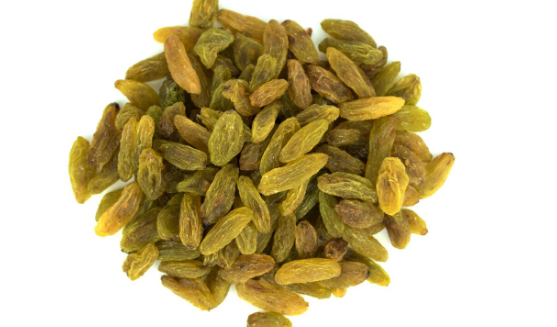The Influence of Grape Maturity Index on Final Color Stability in Green Raisins During Storage
Maintaining the fresh green color of raisins during long-term storage is a persistent challenge for producers and exporters. One of the most decisive factors influencing this is the grape maturity index (GMI) at the time of harvest. By understanding and applying the right maturity parameters, producers can significantly improve the color stability and visual appeal of green raisins, ensuring they meet the expectations of premium export markets.
Why Grape Maturity Matters in Raisin Processing
Harvesting grapes at the optimal maturity level plays a critical role in determining how raisins retain their color over time. The GMI is a combination of physical and chemical markers—most notably, sugar level (°Brix), titratable acidity (TA), pH balance, moisture content, and seed maturation. These indicators signal how ripe the grape is and how its chemical composition may react during drying and storage.
When grapes are under-ripe, their low sugar and high acid levels make them prone to enzymatic browning. Overripe grapes, on the other hand, often have a fragile skin and higher water content, which can result in oxidation and microbial spoilage during storage.
The Science Behind Color Retention in Green Raisins
Color changes in long green raisins are primarily driven by enzymatic browning and oxidative reactions. These processes are influenced by factors such as polyphenol oxidase activity, light exposure, and residual moisture.
Grapes harvested at the ideal GMI typically have:
- A °Brix range of 19 to 22, indicating sufficient sugar content for optimal drying.
- A balanced pH of 3.3 to 3.6 and moderate acidity, reducing oxidation risks.
- Uniform seed color and partial translucency, signaling physiological readiness for drying.
These traits help maintain chlorophyll-related pigments during drying and reduce the risk of undesirable browning during storage.
Key Steps to Ensure Stable Green Raisin Color
1. Measure Maturity in the Vineyard
Use a refractometer to assess °Brix and titration for acidity. Visually inspect skin translucency and seed color to confirm uniform ripening.
2. Harvest at the Right Time
Schedule harvesting when the GMI falls within optimal ranges. This ensures the grapes are neither too soft nor too acidic.
3. Apply Controlled Drying Methods
Maintain drying temperatures between 40°C to 45°C to preserve green color. Excessive heat degrades pigments.
4. Store Under Stable Conditions
Green raisins must be stored in low-humidity, low-light environments. Using modified atmosphere packaging (MAP) can significantly slow down color degradation.
5. Monitor Storage Batches Regularly
Conduct colorimetry tests (e.g., CIELAB values) to assess hue changes over time. Adjust environmental controls accordingly.
The Business Value of Color Stability
Buyers prioritize green raisins that retain a vibrant color, associating it with freshness and quality. Maintaining that color can mean the difference between commodity-grade pricing and premium export rates. Exporters who standardize GMI practices often report lower spoilage, longer shelf life, and improved buyer retention.
read more: Chlorophyll Retention in Green Long Raisins: The Critical Role of Shade Drying and Sulfur Levels
Frequently Asked Questions
What is the ideal grape maturity index for green raisins?
A °Brix of 19–22, balanced with moderate acidity and slight translucency, is considered optimal for drying green raisins.
Why does color change during storage?
Color changes result from enzymatic reactions and oxidation, especially if grapes were overripe or under-dried.
How can I prevent browning in green raisins?
Ensure proper maturity at harvest, controlled drying temperatures, and use of low-oxygen storage environments.
Does sugar content affect raisin color?
Yes. Higher sugar levels at optimal maturity reduce enzyme activity and improve pigment preservation.
What packaging helps maintain color during export?
Modified atmosphere packaging and UV-resistant liners help reduce oxidation and preserve color.

